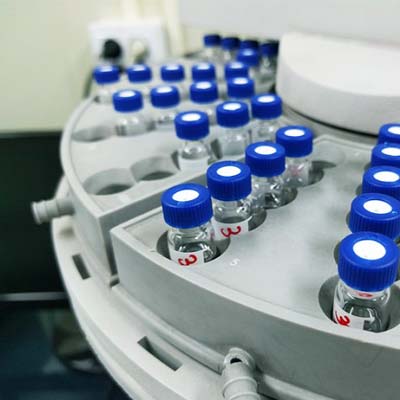HPLC / GPC
AMB Aloe Vera with the highest
amount of Polysaccharides.
AMB Aloe Vera with the highest
amount of Polysaccharides.
Polysaccharides are a kind of carbohydrate with high molecular weight, representing a major class of bioactive molecules derived from microorganisms, animals, or plants. Polysaccharides are extensively used in various healthcare products and medicines because of their vital and unique bioactivities, such as antimicrobial, antitumor, antiviral, and antioxidant activities. In addition, polysaccharides are among the natural biopolymers found on Earth, widely used as biomaterials for wound healing, drug delivery, and tissue engineering. Aloe vera is one of the few natural plants that are very abundant in polysaccharides.
Polysaccharides constitute most of the dry matter of aloe. Acemannan is a kind of storage polysaccharide, an acetylated glucomannan, located in the protoplasts of parenchyma cells containing many polysaccharides in the cell wall matrix.
Polysaccharides form a diverse and complex family of biological macromolecules. They are polymeric carbohydrate molecules composed of long chains of monosaccharide units joined together by glycosidic linkages. It gives the constituent monosaccharides or oligosaccharides during hydrolysis. Polysaccharides own high molecular weights due to containing hundreds to several thousand monosaccharides and polydispersed in nature with a wide range of closely related structures.
Total polysaccharide determination using spectrophotometric methods is time-consuming and does not permit automation. Also, the use of different recovery and analysis procedures does not allow a direct comparison of literature data. Thus, there is an ongoing interest in developing reliable, rapid, and accurate methods to analyze foods’ polysaccharide content for both routine analysis and quality control purposes. A study reports a fast and simple method based on the direct determination of total polysaccharide content in products by high-performance liquid chromatography (HPLC) using refractive index (RI) detection and a calcium sulfonated divinyl benzene-styrene copolymer-based column.
High-performance liquid chromatography (HPLC, formerly referred to as high-pressure liquid chromatography) is a technique in analytical chemistry used to separate, identify, and quantify each component in a mixture.

HPLC has many applications in both laboratory and clinical science. It is a common technique used in pharmaceutical development, as it is a dependable way to obtain and ensure product purity. While HPLC can produce extremely high quality (pure) products, it is not always the primary method to produce bulk drug materials. According to the European pharmacopeia, HPLC is used in only 15.5% of syntheses. However, it plays a role in 44% of syntheses in the United States pharmacopeia. This could be due to differences in monetary and time constraints, as HPLC can be an expensive technique on a large scale. An increase in specificity, precision, and accuracy that occurs with HPLC, unfortunately, corresponds to an increase in cost.
This HPLC method offers a rapid and flexible means to analyze total soluble polysaccharides in different products for pharma, cosmetics, foods beverages, and might be extended to other products.

HPLC has been widely used to separate carbohydrates and their conjugates. HPLC separates compounds in a mixture by using different partition properties between a stationary phase and a mobile phase. The separation can be manipulated by varying the make-up and concentration of the mobile phase and the stationary phase’s adsorption properties.
HPLC uses several types of separation mechanisms characterized by the kind of stationary and mobile phases employed. In NP chromatography, the stationary phase is hydrophilic, and the mobile phase is hydrophobic. In RP chromatography, the stationary phase is hydrophobic. Ionic exchange chromatography uses ion exchange material as its stationary phase to separate ionic compounds. SEC separates compounds by molecular size; it slows the elution of small molecules by increasing their pathway through a porous stationary phase and increases elution of large molecules by excluding them from the small pore solid support.
HPLC has been extensively used in carbohydrate analysis due to its versatility and separation capabilities. Its different separation modes, coupled with varying detection methods, can meet the high analytical demands and provide useful tools for the clinical and routine chemical analysis of carbohydrates.
At AMB Wellness, we use HPLC to know the amount of polysaccharides in our specialty ingredients and to be able to offer the required quantity according to what our clients need for their high-end products, complying with the quality that we always provide to our clients in every batch of our products.
“disclaimer” that FDA has not evaluated the claim. The disclaimer must also state that the dietary supplement product is not intended to “diagnose, treat, cure or prevent any disease,”because only a drug can legally make such a claim.

